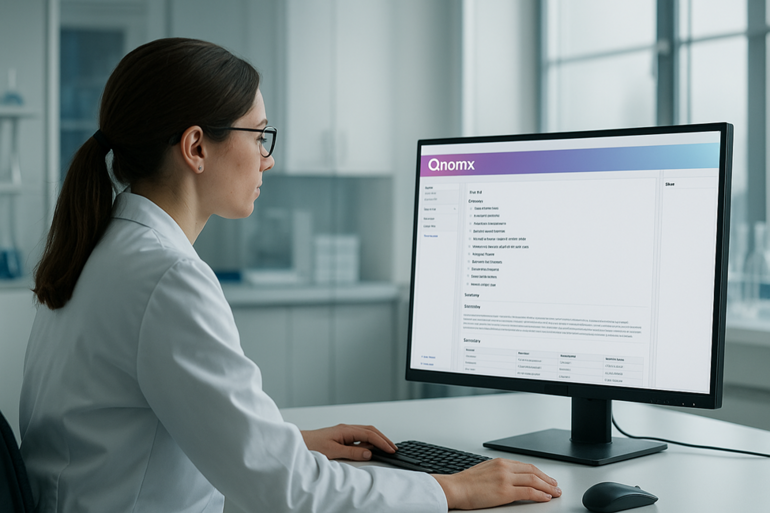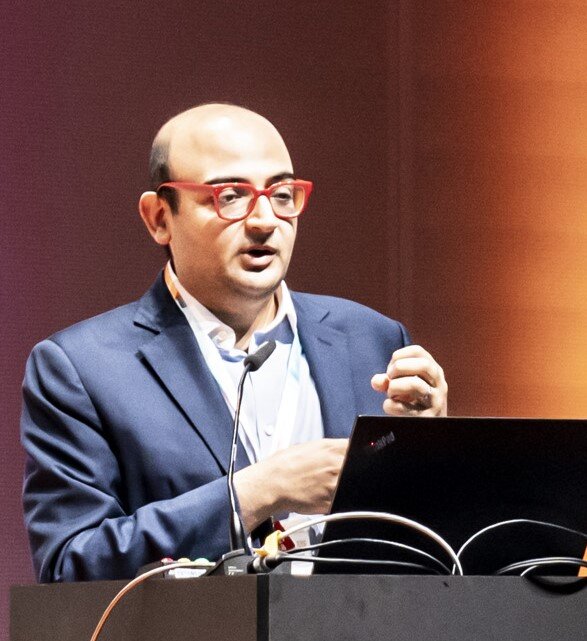While many models and tools are designed to support clinical decision-making, AI is already serving cancer research for background tasks, with some potential to educate patients too
In the last few months, an artificial intelligence (AI)-driven test combining digital images, biopsies and clinical data of patients with prostate cancer entered the guidelines of the National Comprehensive Cancer Network; an AI-based prognostic tool to stratify patients with non–small cell lung cancer (NSCLC) into high- or low-risk mortality categories was granted breakthrough device designation by the Food and Drug Administration (FDA); and the UK's National Health Service launched the largest prospective trial of using AI to assess routine mammogram screenings. This short, non-exhaustive list exemplifies how much AI has already penetrated some areas of oncology, contributing to the hype around the impact of different forms of computer intelligence on medicine. The reality is that most of the automated analytical models and systems designed to transform cancer care are not yet ready for prime time. “Among the applications that are approved for clinical use, including machine learning algorithms and deep neural networks, AI in oncology can only perform specific tasks from one or few data sources – what is called narrow AI –, so its use is still limited in terms of supporting oncologists' decisions,” explains Dr Rodrigo Dienstmann, working at the Oncoclínicas & Co, Brazil, and Vall d’Hebron Institute of Oncology, Spain, Editor-in-Chief of the ESMO Real World Data and Digital Oncology, one of the most recent Society’s peer-reviewed journals. Digital pathology is leading the way, where computer-generated solutions have proven to enhance the accuracy and efficiency of image analysis for tumour detection and classification, identification of prognostic molecular biomarkers, and prediction of patient outcomes. “What a medical oncologist may not know is that some pathology reports are prepared with the contribution of AI algorithms which simplify the analytical process, making it faster, more accurate and reproducible,” he says. However, technology may eventually play a significant role in the diagnostic process, identifying biomarkers and making predictions that humans alone cannot predict. “Emerging algorithms that incorporate AI are starting to unveil hidden patterns from cancer imaging: in other terms, they may detect signals that even well-trained pathologists cannot detect.”
Emerging trends to watch
On the research side, numerous studies are exploring the potential of AI in an effort to bring innovation to clinical practice in the next future. One emerging trend is the identification of novel biomarkers so that technology performance could outplay human capacities in visual inspection and interpretation of tumour samples or images, providing more information about the tumour profile. For example, some automated systems have been developed to mine whole-lung information from computer tomography images as a non-invasive approach to predict EGFR mutation status in lung cancer and response to targeted therapy (Lancet Digit Health. 2022 May;4(5):e309-e319; Acad Radiol. 2024 Feb;31(2):660-683). Others are using histomorphology patterns from hematoxylin and eosin-stained slides to infer EGFR mutations with high accuracy (Lab Invest. 2024 Aug;104(8):102094). “EGFR testing is crucial to guide treatment in lung cancer, and molecular analysis using next-generation sequencing or other advanced techniques is not always accessible, it takes time and costs. Integration of AI to radiomics or digital pathology workflows may help overcome these barriers while easing the analysis at a hospital level,” notes Dienstmann.
Another future target of cancer research is represented by multi-purpose and multimodal AI models which combine data from multiple sources to support oncologists in making clinical decisions. In the digital era of oncology, data from patients are collected at various stages along the disease journey, but with different modalities, thus resulting sparse across platforms or channels, and heterogeneous in format and quality. AI may enable the analysis of mixed datasets including data from electronic health records, genomic testing, imaging and real-world patient outcomes (e.g., collected via wearables or remote monitoring systems) returning a quick overview of patient health status and disease progression to personalise cancer care (ESMO Real World Data and Digital Oncology, Volume 8, 100120).
According to Dienstmann there is still a long way ahead before the use of AI systems as such would become part of the clinical routine. According to the EU Artificial Intelligence Act, which entered into force in August 2024, these applications are classified as “high-risk” – i.e., they materially influence the outcome of decision making with a potential harm to health. “Also, oncologists’ education and confidence in using AI applications need to go in parallel with technological advances and regulatory decisions. A deep understanding on how a tool has been trained to make predictions, or of its performance metrics is essential to enable the human expert to eventually question the recommendation of the machine in those cases where the best treatment option is still scientifically controversial.” Finally, crucial to the achievement of a data-driven personalised cancer care enabled by AI would be building flexible systems so that to ensure their interoperability in different settings, and the implementation of a cancer-specific information technology infrastructure which should be designed to facilitate the longitudinal collection of comprehensive health data.
The ‘unseen’ uses of AI
The AI revolution in oncology has also many administrative applications in learning healthcare systems and clinical trial operations. Digital technology can expedite real-world data collection and simplify clinical trial procedures (ESMO Open. 2023 Oct;8(5):101633; ESMO Real World Data and Digital Oncology, Volume 4, 100038), and researchers are increasingly using AI-developed softwares to read data entries, filling forms, sharing information and support all those activities in the background of cancer research. Also, generative AI is already finding its place in scientific publishing. Dienstmann believes that “no one writing a scientific paper starts from a white paper anymore,” intending that the use of automated tools to summarise the literature on a given topic and to produce text that is part of the introduction or discussion sections of a manuscript is common practice among researchers. “This is not perceived as bad behaviour, provided it is disclosed when the final paper is submitted to the journal,” he reassures.
Finally, not all AI applications are designed for physicians - patients can be final users too. Chatbots and AI agents hold promise to reshape patient engagement, opening new opportunities for educating patients to prevention, assisting in the management of treatments and their side-effects, or providing support on psychological or sexuality issues related to cancer (ESMO Open. 2023 Oct;8(5):101633). “Unfortunately, it is well-known that we as medical oncologists have not enough time to oversee all those aspects of living with cancer and that may be cause of concern or distress to our patients. AI agents could act as an extra contact point to the medical team to support patients in a timely manner, only if they are designed and validated in the healthcare setting,” he adds, meaning that commonly used chatbots or virtual assistants are not suitable to this purpose. “Long time before physicians can make decisions based on AI, patients will be using this technology, so we must be prepared.”
AI & Digital Oncology: Resources in one place
Looking for further insights into how artificial intelligence and digital tools are impacting oncology? The ESMO AI & Digital Oncology Hub brings together expert perspectives, research updates, and thought leadership from across oncology.
It is a space where you can stay informed, discover resources, and follow the conversation on digital innovation in cancer research and treatment.
To further explore the transformative potential of AI in oncology, the very first ESMO AI and Digital Oncology Congress 2025, taking place from 12 to 14 November, will provide a dedicated platform focused on the latest advances in AI and digital technologies in cancer care.






